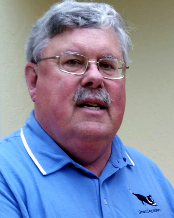
SMART DOG MININGTM
It
takes a smart dog to find hidden treasures
Desliming and Drain & Rinse Screens
An Introduction
to Desliming and Drain & Rinse Applications
In mineral processing desliming refers to the removal of very fine
particles from a feed stream that can cause operational difficulties
in the next and latter processing steps.
For flotation it is often done at around 50 microns.
For dense media operations it is normally done at 0.5 mm (500
microns or 28 mesh(nominal)).
The following discussion is about the second operation,
desliming at 0.5 mm.
The amount of water used for desliming should give a solids
concentration of 7% by volume in the underflow from the desliming
stage.

Where:
A = the amount of water required
a = % by weight of -0.5 mm in the feed -10 mm
S = amount of -10 mm in the feed in t/hr
![]() = the specific gravity
of solids in the feed (average)
= the specific gravity
of solids in the feed (average)
DRAIN AND RINSE
The float and sink products from a dense media process are processed
in drain and rinse circuits that normally contain a sieve bend
followed by a vibrating screen.
Alternatively two sieve bends followed by a screen or a large
banana screen can be used.
The most common has been the sieve bend followed by a
vibrating screen.
80% to 85% of the media is removed by the sieve bend. The first part of the screen continues the draining with the sieve bend and drain section media going back to the correct media sump for immediate reuse. A common practice is to take a minor split (less than or equal to 10%) of this stream to the media recovery circuit to minimize build-up of fine solids in the media. The drain portion is normally about 25% of the screen length.
The second part of the screen is normally equipped with sprays or
wash water to remove any remaining media adhering to the particles.
This goes to a media recovery circuit to reclaim the media.
Rinse is normally done in two sections, with the first using
recycled water (if available) and being about 75% of the flow, and
the second (final) portion being fresh water and 25% of the flow.
Following the drain sectionthe amount of media still adhering to the
material can generally be calculated by:
![]() or
2:
or
2:
![]()
Where:
Q
= the amount of media adhering in liters/ton of material
da
= average grain
size of the material
![]() = the specific gravity
of solids in the feed (average)
= the specific gravity
of solids in the feed (average)
![]() per meter of width
per meter of width
Where:
Q
= the amount of rinse water per meter of screen width (25% fresh and
75% recycled)
Dt
= top size of material in mm
![]() per ton of material
per ton of material
Where:
Q
= the amount of rinse water per ton of material rinsed (25% fresh
and 75% recycled)
da
= average grain
size of the material
![]() = the specific gravity
of solids in the feed (average)
= the specific gravity
of solids in the feed (average)
![]() per meter of screen
width
per meter of screen
width
Where:
Q
= the amount of rinse water per meter of screen width (25% fresh and
75% recycled)
da
= average grain
size of the material
![]() = the specific gravity
of solids in the feed (average)
= the specific gravity
of solids in the feed (average)

o
40+
years’ experience in the mining industry with strong mineral
processing experience in Precious metals, copper, industrial
minerals, coal, and phosphate
o
Operational experience in precious metals, coal, and phosphate plus
in petrochemicals.
o
Extensive experience studies and feasibility in the US and
international (United States, Canada, Mexico, Ecuador, Columbia,
Venezuela, Chile, China, India, Indonesia, and Greece).
